Invasive Species Hit List
Across the country, NWTF members are faced with invasive plants negatively impacting wildlife habitat. From West to East, the organization’s biologists have identified some of the most significant offenders – and how to control them as much as possible.
Patt Dorsey, NWTF director of conservation operations in the West, surveyed her regional biologists and they proclaimed that cheatgrass, Russian olive, and tamarisk rank as the three worst invasive species, with Medusa head and yellow starthistle being a problem west of the Sierras and Cascades in California and Oregon.
District biologist Chuck Carpenter added the major threat is habitat conversion due to cheatgrass outcompeting native species because of increased wildfire frequency. Though this invasive provides early forage, it doesn’t remain green long enough to provide nutrition during summer and fall. It also does not provide good cover or nesting habitat.
Regarding control, Carpenter says that cheatgrass continues to bewilder land managers by its resiliency. Herbicide treatment paired with mechanical removal works best, but unless a robust native community exists that can compete with cheatgrass, land managers may have to begin anew in three to five years. The best option is to maintain a healthy, robust, native plant community that is resistant to cheatgrass invasion and to minimize any disturbance that allows cheatgrass to thrive.
Russian olive and tamarisk can create a monoculture, offering little diversity in structure, food and cover type. “Efforts to control unwanted concentrations of Russian olive have included mowing seedlings, cutting, burning, spraying, girdling and bulldozing,” Carpenter said. “Most effective is a combination of repeated control efforts, cutting trees, then spraying or burning the stumps. For tamarisk, bio-control with beetles (genus Diorhabda) has had some success.”
Central Region
In the Central region, Director of Conservation Operations Jared McJunkin said that Russian olive and tamarisk are also issues in the western part of the NWTF’s Central Region and were noted by staff as causing significant issues for riparian, or streamside, corridors.
“For Great Open Spaces (including Texas, New Mexico, Colorado, Oklahoma, Kansas, Nebraska, Wyoming, North Dakota, South Dakota and Montana), I would also add Eastern red cedar, although a native species in many states,” McJunkin said. “Plus bush honeysuckle, buckthorn, and Sericea lespedeza for Crossroads (North Dakota, South Dakota, Minnesota, Iowa, Illinois, Missouri, Michigan, Indiana, Ohio, Wisconsin and Kentucky), as well as introduced grasses — smooth brome and tall fescue — for both areas. Smooth brome and tall fescue are low in value for wildlife.”
Common Invasives
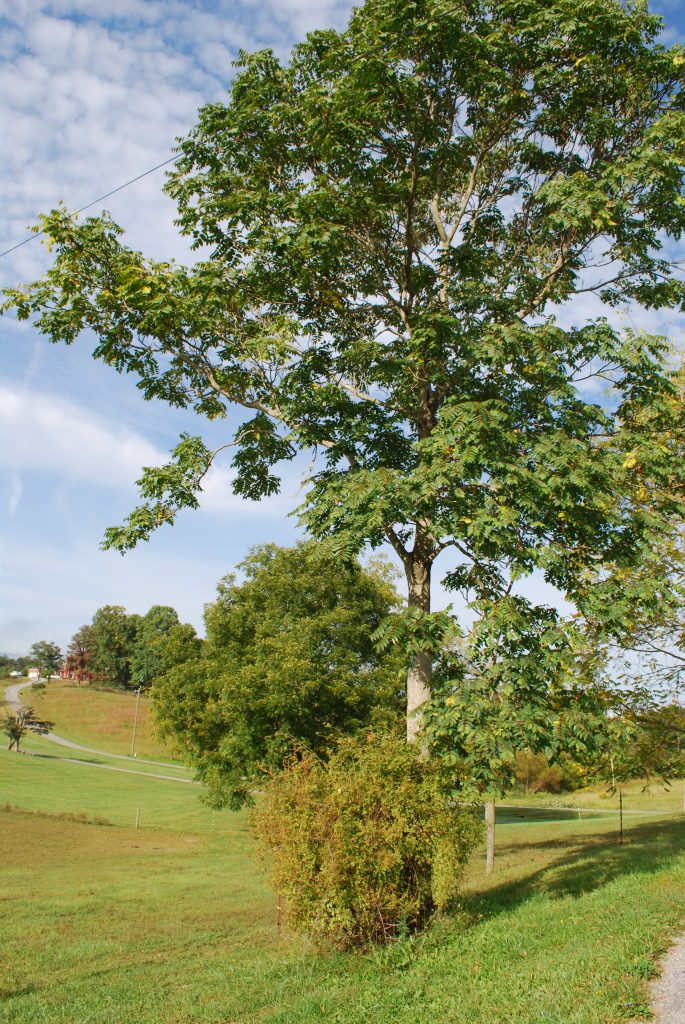
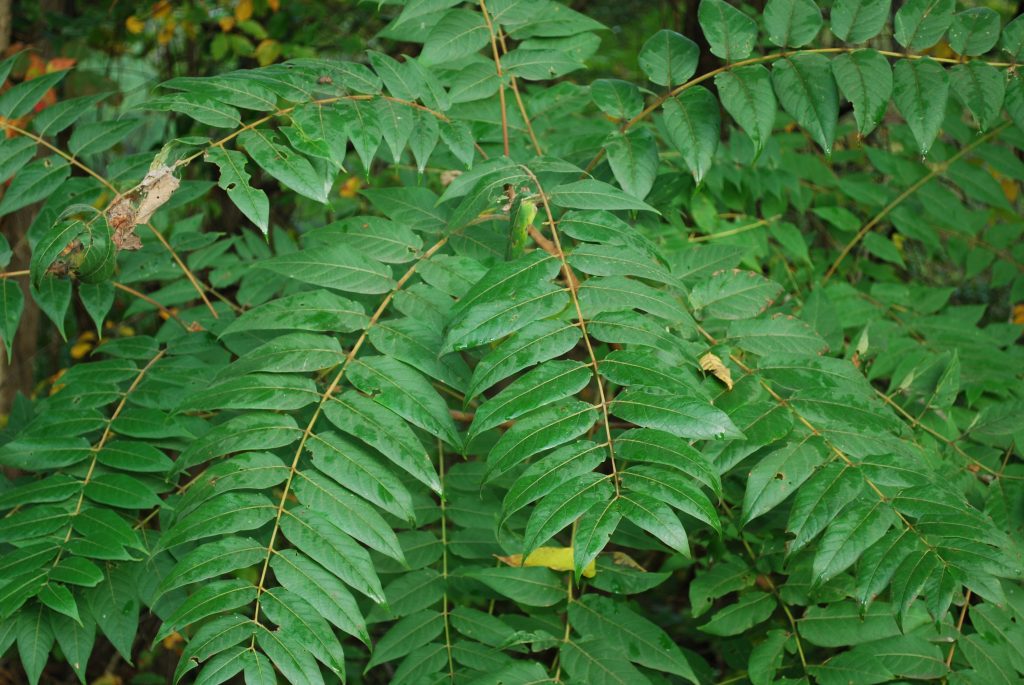

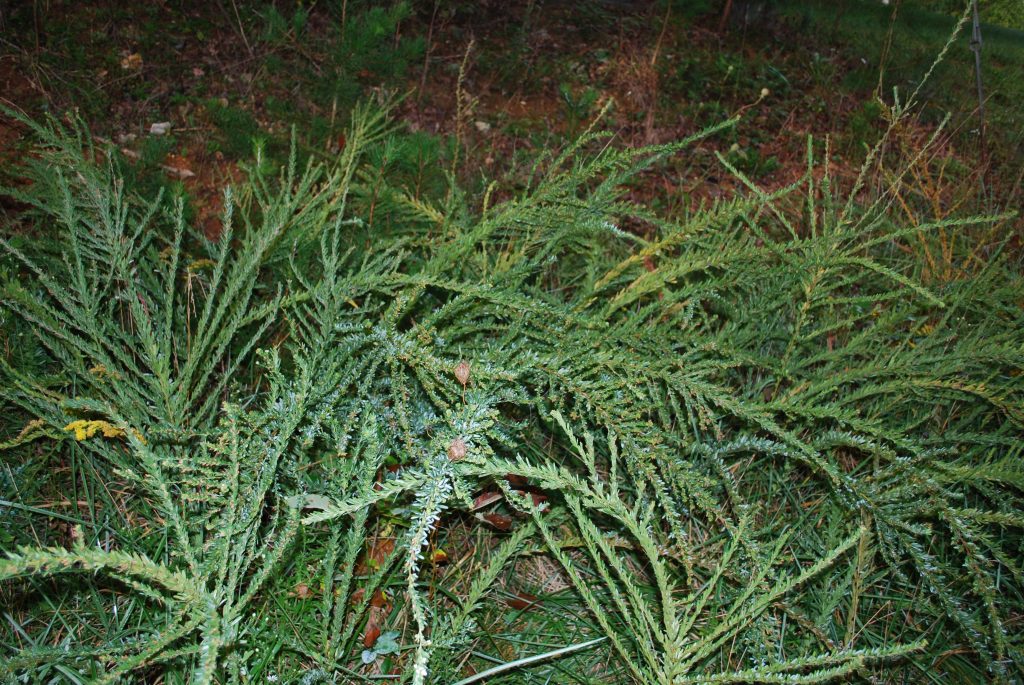


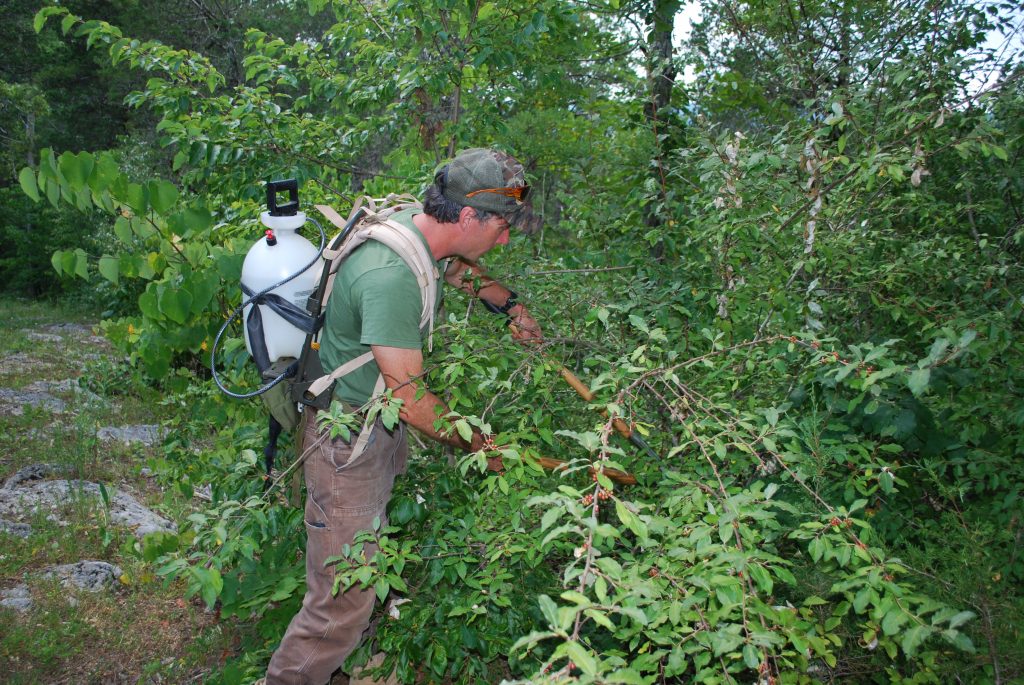
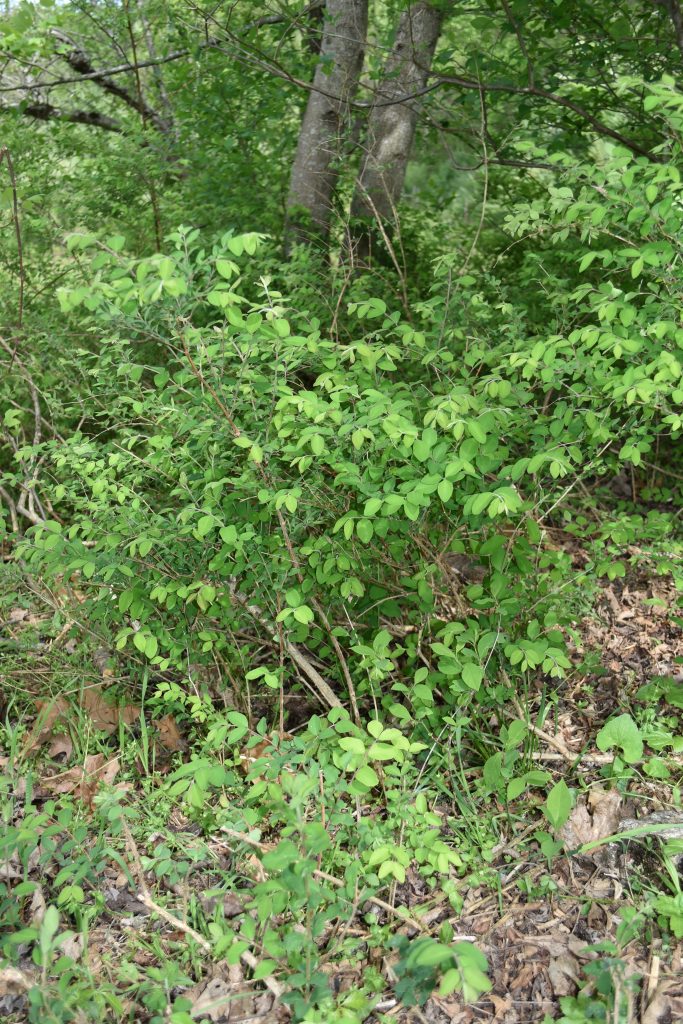
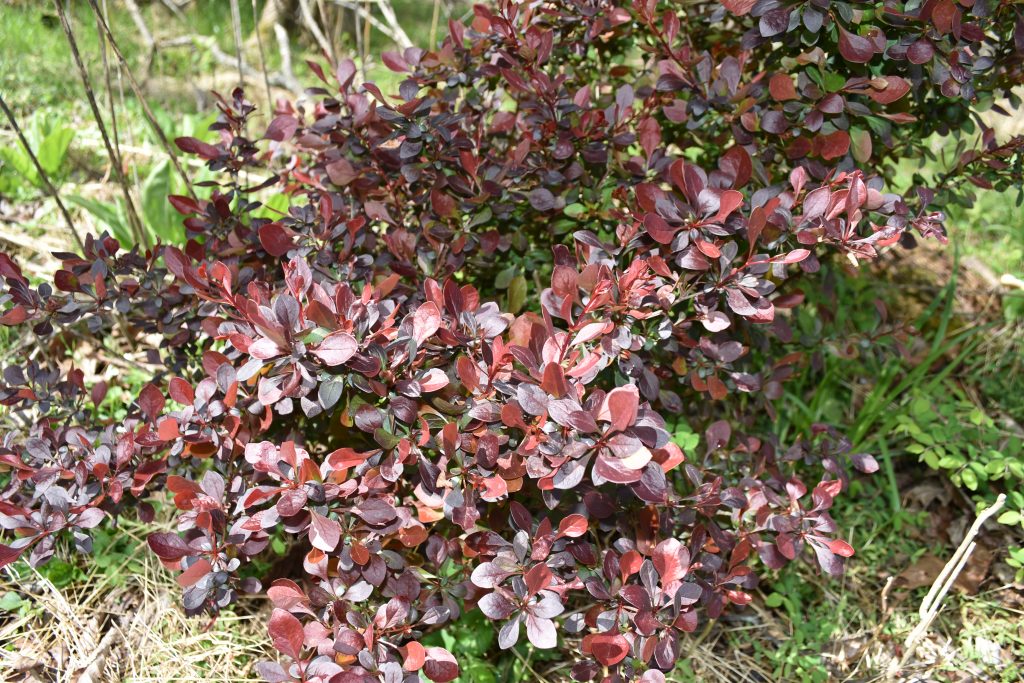
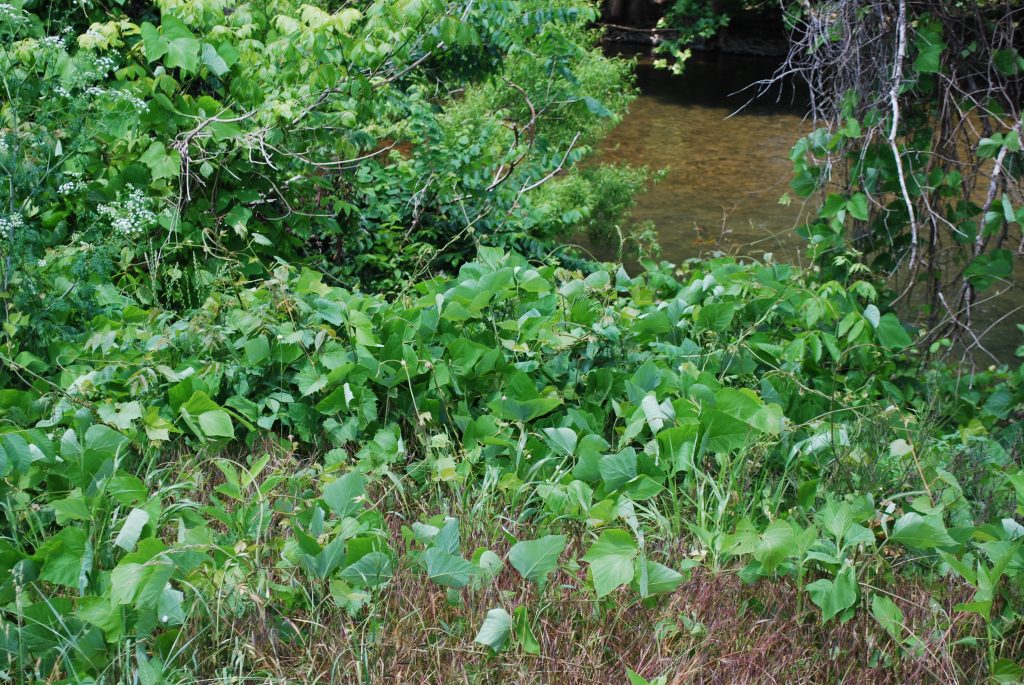
District biologist Clayton Lenk relates that buckthorn is of particular concern.
“If untreated, buckthorn will become so dense that it takes over native habitat and greatly reduces the ability for wildlife to use it,” he said. “It shades out native species and over time eliminates the natural regeneration of trees and shrubs wildlife depend on. Buckthorn grows so thick that it does not provide any roosting opportunities for birds like turkey or grouse. It’s often controlled by cutting the stem and then treating the stump with herbicide.”
East
Doug Little, Director of Conservation Operations in the East, consulted district NWTF biologists, and they came up with this rogue’s gallery (impact and control methods in parentheses). In America’s Colonial Forests (Maine, New Hampshire, Vermont, Massachusetts, Connecticut, New York, Pennsylvania, Rhode Island, Delaware, Maryland, New Jersey, Virginia, West Virginia, Kentucky and Ohio), the choices were Japanese stilt grass (monoculture/multiple years of herbicide), Japanese barberry (lack of benefit for wildlife/herbicide application either foliar or cut stump), and Oriental bittersweet (chokes out trees/foliar and cut stump herbicide application).
In America’s Mid-South Rebirth (Alabama, Tennessee, Mississippi, Georgia, Louisiana, Arkansas, North Carolina, South Carolina, Kentucky, Missouri, Oklahoma, Virginia, West Virginia and Indiana), the Eastern staff suggests that major threats include Chinese privet (aggressively forms dense thickets/ multiple herbicide treatments), Sericea lespedeza (dominates all kinds of openings/ years of repeat herbicide treatments), and tree-of-heaven, also known as ailanthus (rapid growth, spreads easily and quickly/cut stump application and basal spray).
For the Southern Piney Woods (Alabama, Mississippi, Georgia, Louisiana, Arkansas, Oklahoma, Texas, North Carolina, South Carolina, Virginia and Florida), the culprits include Chinese tallow (invades waterway edges, grassland prairies and upland sites/ multiple herbicide treatments), cogon grass (invades a wide variety of habitats and spreads aggressively/herbicide treatments of glyphosate, imazapyr or a mixture of both) and kudzu (forms dense patches and spreads in multiple ways/herbicide applications conducted when vine is actively growing).
So, retrieve your work gloves and fill up your sprayers … there’s much to do across our country.
CONNECT WITH US
National Wild Turkey Federation
770 Augusta Road, Edgefield, SC 29824
(800) 843-6983
National Wild Turkey Federation. All rights reserved.
